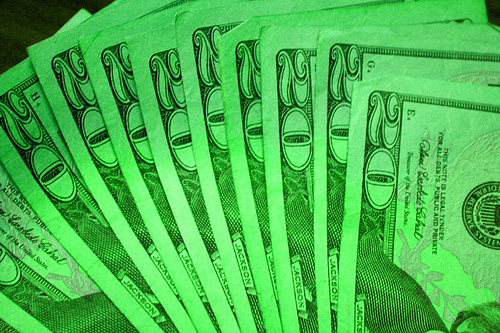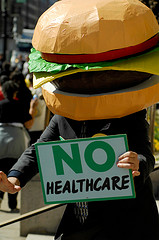 Pop quiz: When was this statement made?
Pop quiz: When was this statement made?
EPA and its minions in the press and the professional environmental lobbies have assumed an absolute monopoly right to flood the American economy with regulations, litigation, and compliance costs that are out of proportion to any environmental problem — real and imagined — that has reached the congressional calendar.
It’s time to get off this super bureaucracy kick unless you really believe that the present drastic deterioration of our economy, productivity, international competitiveness, and living standards will soon miraculously fade away. It won’t happen so long as we keep writing blank checks that authorize hotshot junior lawyers and zealots ensconced in the EPA to bleed American industry of scarce funds needed for investment, modernization, and job creation.
Given the strong rhetoric, it would fit right into today’s environmental debate. But it was actually written by David Stockman, when he was leaving Congress in the early 1980s to become Ronald Reagan’s Office of Management and Budget director.
Of course, in hindsight, we know that the sky did not fall. The “drastic deterioration” did fade away (“miraculously” or not), even after early attempts by the Reagan administration to gut environmental protection were halted by popular backlash. Businesses have not been bled to death by environmental compliance costs, but instead have hummed along for three decades, generating wealth for the American people while improving their environmental performance. In the three decades since 1981, when Reagan took office, the U.S. economy has grown by an average rate of 3.3 percent, with per capita GDP more than tripling during that time.
Of course, since the EPA was created in 1970, the U.S. has seen recessions, bubbles, flush times, and dire straits. But not one of these macro episodes was caused by anything the EPA has done. Instead, they were caused by financial crises, like the 2007 mortgage crisis and the savings and loan crisis in the late 1980s, or external shocks, like the 1970s oil embargo (made all the worse by the country’s addiction to gasoline).
But whenever the economy declines, the same anti-environmental rhetoric is trotted out, with those on the right calling the EPA a bunch of “hot shot junior lawyers and zealots” (Stockman, 1980s), or even worse, “the Gestapo of government” (Tom DeLay, 1990s), and accusing the agency of wanting to “put the American economy in a straightjacket” (Joe Barton, 2010s).
How many times must these dire predictions about economic doom from environmental protection be proven untrue before we collectively stop listening?
At the same time that it’s become crystal clear that economic growth and environmental protection can go hand-in-hand, the science showing the antagonistic relationship between pollution, public health, and environmental quality has grown considerably stronger. From particulate matter deaths to the climate change crisis, we know a lot more about our effect on the environment, and the environment’s effect on us. And the more we learn, the stronger the case for action has become.
Putting this all together, the EPA recently conducted a retrospective analysis of the costs and benefits of cutting pollution under the 1990 amendments to the Clean Air Act. The agency found that these protections added over a trillion in net benefits to the U.S. economy per year in 2010. This report, which was based in the best available scientific and economic information, touches only a portion of the essential environmental protection done by federal and state governments.
Rather than being a drag on the economy, the “super bureaucracy” warned of by Stockman is a supercharged boon for the American people.
There are some that may benefit from unrestricted pollution: owners of fossil fuel companies and the dirtiest industrial firms. Even they are harmed by dirty air and water, but cleaning up their act is costly for their bottom lines.
But when pollution goes unaddressed, it is the general public that pays through doctors’ bills, sick days, lowered property values, and untimely deaths. These costs add up to billions of dollars — far more than the investments needed to bring pollution down.
That side of the ledger is rarely acknowledged by those who decry the EPA’s work. These voices do their best to downplay the downsides of emissions — going so far as to question basic public health science. Instead of genuine costs and benefits, we are given the false choice of a clean environment or a strong economy.
After 30 years, it is time to start ignoring all of the hyperventilating about the imaginary economic horrors of environmental protection. In reality, there is overwhelming evidence that a healthy environment is part of a strong economy; indeed, allowing pollution to continue unabated is the economically foolish thing to do.



